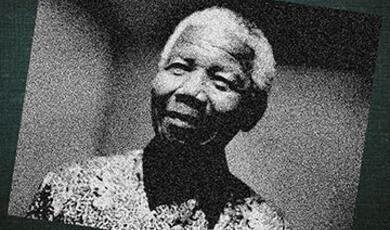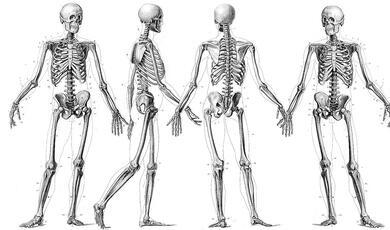Sanskrit Mathematics in the Language of Poetry
Share
- Details
- Text
- Audio
- Downloads
- Extra Reading
This event will focus upon mathematics as expressed in different languages and cultures.
Dr Anuj Misra will discuss Sanskrit Mathematics in the Language of Poetry (4pm).
Download Text
Sanskrit Mathematics in the Language of Poetry
Dr Anuj Misra
20th October 2021
On the Status of Mathematics, ca. 850 CE
Among the various kinds of disciplinary or śāstric studies in Sanskrit, mathematics was considered both the art and the science of calculation. The Sanskrit word for mathematics gaṇita derives from the verbal root √gaṇ ‘to count, enumerate or reckon’, and accordingly, a mathematician or gaṇaka was a person who could calculate with numbers. The ubiquitous use of this ability to elicit knowledge via calculations earned mathematics its place as a superior discipline compared to other religious and secular fields of study. In the prolegomenon of his seminal work the Gaṇita-sāra-saṅgraha the ‘Epitome of the essence of calculation’ (ca. mid ninth century CE), the Jain mathematician Mahāvīra described the preeminence of mathematics in twenty-three metrical verses; of which, here are two examples praising its majesty, with perhaps a touch of poetic hyperbole:
छन्दोऽलङ्कारकाव्येषु तर्कव्याकरणादिषु । कलागुणेषु सर्वेषु प्रस्तुतं गणितं परम् ॥
Mahāvīra’s Gaṇita-sāra-saṅgraha, sañjādhikāra, 11
“Among prosody, poetics, and poetry; among logic, grammar, and other similar subjects; among all things that constitute the excellence of the [various] arts, the science of calculation [i.e. mathematics] is considered the most excellent.”
बहुभिर्विप्रलापैः किं त्रैलोक्ये सचराचरे । यत्किंचिद्वस्तु तत्सर्वं गणितेन विना न हि ॥
Mahāvīra’s Gaṇita-sāra-saṅgraha, sañjādhikāra, 16
“What is the point in rambling on endlessly? Whatever exists in all the three worlds, [worlds that] possess [things that] move and are motionless, all of those things cannot exist separated from mathematics.”
Hymnal Invocation of Numbers, ca. 1000 BCE
The story of Sanskrit mathematics, however, is much older. It begins over three thousand years ago in the hymns of the Vedas praising, among other things, sequences of extraordinarily large numbers. For example, the Taittirīya-saṃhitā of the Yajur-veda (ca. tenth century BCE) invokes successively larger powers of ten from a hundred up to a trillion using specific words to denote the large numbers.
“Hail to a hundred, hail to a thousand, hail to ayuta [ten thousand], hail to niyuta [hundred thousand], hail to prayuta [million], hail to arbuda [ten million], hail to nyarbuda [hundred million], hail to samudra [billion], hail to madhya [ten billion], hail to anta [hundred billion], hail to parārdha [trillion], hail to dawn, hail to daybreak, hail to him who will rise, hail to the rising, hail to the risen, hail to the heaven, hail to the world, hail to all.”
Fire Altars and Rules of Cords
Numbers and their arithmetic offered an opportunity to the Vedic people to connect cosmic dimensions to their sacrificial rituals and propitiatory practices. Often, the types or goals of the fire sacrifices were intimately connected to the shapes of the sacrificial altars built from fire-baked bricks of specific shapes and sizes. For example, the image on page 3 shows the outline of the falcon-shaped fire altar built for the Ati-rātra agni-cayana śrauta ritual (the ‘Overnight heaping of fire’) performed as a symbolism of the sacrifice of the cosmic man (Puruṣa/Prajāpati), through which the universe was created and ordered, and his re-ordering to ensure the continuity of the seasons and the well-being of the ritual’s patron or sacrificer. The dimensions of the bricks used in the construction of these fire altars often conformed to the measurements of the body of the sacrifice. The geometry governing their construction was determined by manipulating cords of various lengths attached to wooden stakes. Over time, the manuals of these cord-based measurement techniques came to be known as the Śulba-sūtras, the ‘Rules of the cords’.
Relation of Areas, Baudhāyana-śulba-sūtra, ca. 800-500 BCE
The Baudhāyana-śulba-sũtra is one of the oldest versions of these manuals of cord-rules, composed ca. eight to fifth BCE, and it describes various area-preserving transformations of geometrical shapes like squares, rectangles, trapezium, circles, etc. The knowledge of these transformations, although intimately connected to the construction of the fire altars, led to more general observations in geometry. For example, in the verses 1.12–13 seen below, we find Baudhāyana’s expression of the Pythagorean theorem centuries before the birth of its eponymous Greek discoverer.
दीर्घचतुरश्रस्याक्ष्णयारज्जुः पार्श्वमानी तिर्यङ्मानी च यत्पृथग्भूते कुरुतस्तदुभयं करोति ।
तासां त्रिकचतुस्कयोर्द्वादशिकपञ्चिकयोः पञ्चदशिकाष्टिकयोः सप्तिकचतुर्विंशिकयोर्द्वादशिकपञ्चत्रिंशिकयोः पञ्चदशिकषट्त्रिंशिकयोरित्येतासूपलब्धिः ।
Baudhāyana-śulba-sūtra, 1.12–13
“The cord [equal to] the diagonal of an oblong [i.e., a rectangle] makes [the area] that both the length and width separately [make]. By knowing these [things], the stated construction [is made].
This is demonstrated in those [rectangles having sides] 3 and 4, 12 and 5,
15 and 8, 7 and 24, 12 and 35, 15 and 36.”
Jatā Pātha Recitation Style, ca. 500 BCE
What is noteworthy in the history of the transmission of these Vedic texts is the preference of orality over the written word. The Vedas were meant to be recited, heard, and memorised, and accordingly, their contents were composed in the format of condensed prosaic aphorisms or sūtras, recited with precise pitch-accent variations. The obedience of strict rules of recitation made it easy to memorise and transmit large volumes of text across generations largely uncorrupted, even if their laconic language made understanding their meaning often difficult. Various recitation styles were developed to aid in this process of memorisation, many of which were codified by sequences of numbers, e.g., the jaṭā-pāṭha shown here is a style where a pair of words are repeated three times with one repetition being in the inverted order.
Trisyllabic Metrical Foot or Ganas of Sanskrit Prosody
The emphasis on recitation continued into the Classical period of Sanskrit following the standardisation of Sanskrit grammar by Pāṇini in his seminal work, the Aṣṭhadhyāyī the ‘Eight chapters’ (ca. fifth century BCE). Increasingly, Sanskrit texts began to be composed in metrical poetry with verses of different lengths in various meters rather than in the short aphoristic style of prosaic sūtras. The sequence of light (unstressed) and heavy (stressed) syllables in each line of the verse specified its metrical signature.
The 19-syllabled śārdūlavikrīḍita (the ‘sport of a tiger’) meter where each line has the metrical signature ma-sa-ja-sa-ta-ta-H.
(Source: Bhāskara II’s Līlāvatī, 1)
The combinatorial rules of calculating the distribution of light and heavy syllables in meters of various specific lengths was then as much a question of mathematics as it was perhaps of prosody.
Piṅgala’s Chandah-śūtra, ca. 300-200 BCE
In fact, the challenge of composing metrical verses became a mathematical problem for many Sanskrit grammarians. For example, Piṅgala, in his Chandaḥ-śūtras (ca. third or second BCE), describes, although cryptically, the number of metrical patterns of a certain length that contain a specified number of light or heavy syllables—in modern mathematical parlance, this is the problem of finding a binomial coefficient nCp where p, the number of light or heavy syllables, is an integer lying between 0 and n, the total number of syllables.
परे पूर्णं । परे पूर्णमिति । (Chandaḥ-śūtra, 8.33–34)
“Next, full. Next, full, and so on.”
As we see here, Piṅgala simply claims “Next, full. Next, full, and so on”; his commentator Halayudha (ca. tenth century CE) interprets these two sūtras as generating the meru-prastāra, the ‘pyramidal expansion’ or the so-called Pascal’s triangle. The sequence of internal numbers in each row of the pyramid is generated by summing the diagonal entries from the previous row. For a meter of 4 syllables, the entries in the fifth row of the pyramid indicate that there are
- two combinations of all four light or heavy syllables,
- four combinations of three light and one heavy syllable,
- four combinations of three heavy and one light syllable, and
- six combinations of a mixture of three light and three heavy syllables.
In total, there are 16 possible combinations of light and heavy syllables in a meter of 4 syllables.
Āryabhata’s Āryabhativa, 499 CE
Around the middle of the first millennium CE, Sanskrit astral sciences (jyotiṣa) became the primary vehicle for the advancement of mathematics. The growing complexity of astronomical computations; in particular, those involved in determining the true positions of the planets and the times of the eclipses required more advanced numerical and geometrical techniques. Increasingly, mathematical ideas were elaborated in canonical astronomical treatises (siddhāntas) composed in an assortment of metrical stanzas (padyas), each with their own inherent rhythmic patterns. For instance, Āryabhaṭa, in his Āryabhaṭiya (written at the end of the fifth century CE), describes an algebraic method to find two unknown quantities knowing their difference and their sum in a verse composed in the āryā meter.
द्विकृतिगुणात्संवर्गाद् द्व्यन्तरवर्गेण संयुतान्मूलम् । अन्तरयुक्तं हीनं तद् गुणकारद्वयं दलितम्॥
Āryabhaṭiya (gaṇitādhyāya), 2.24
“The square root of the product [of two quantities] with the square of two as the multiplier [and] increased by the square of the difference of the two, is increased or decreased by the difference, and halved, [this will produce] the two multipliers [of that product].”
In modern terminology, for two unknown quantities x and y, if their difference (x-y) and their product (x·y) are known, then, Āryabhaṭa’s method computes x and y as
and
The āryā meter is an extremely popular moraic meter that can be recited in several ways.
Bhāskara I’s Commentary (629 CE) on Āryabhativa, 2.24
Indeed, the parsimony of poetic speech often meant that authors themselves (or sometimes, later writers) had to write various kinds of prose commentaries (vyākhyās, ṭīkās, bhāṣyas, udāharaṇas etc.) to explain the mathematics expressed in the terse metrical verses (mūla) of their canons. This system of writing metrical base texts and subsequent prosaic commentaries constituted much of the standard didactic of technical literature in Classical Sanskrit. The emphasis, however, remained on a verbal presentation of the content—a sort of running commentary.
For example, in his commentary on Āryabhaṭa’s aforementioned rule to determine two unknown quantities, Bhāskara I glosses the words of the base text to explain their meaning. The style of Bhāskara I’s exposition is extremely didactic—first, individual words are explained and then their meaning is brought together to understand the sentence. For instance, to explain the expression dvikṛtiguṇāt saṃvargād... (Āryabhaṭiya, 2.24 a) “The square root of the product [of two quantities] with the square of two as the multiplier [and] increased by the square of the difference of the two,...”, Bhāskara I says:
द्वयोः कृतिः द्विकृतिः द्विकृतिर्गुणो यस्य स द्विकृतिगुणः तस्माद्द्विकृतिगुणात् । कस्मादित्याह संवर्गात् ।...
dvayoḥ kṛtiḥ dvikṛtiḥ dvikṛtirguṇo yasya sa dvikṛtiguṇaḥ tasmād dvikṛtiguṇāt | kasmādityāha—saṃvargāt |...(Āryabhaṭiyabhāṣya on 2.24 a)
“dvikṛti is the square of two [i.e., 4]; dvikṛtiguṇa is that which has the square of two as the multiplier, therefore [the word] dvikṛtiguṇāt [‘with the square of two as the multiplier’]. What has this [as its multiplier]? [To this] he [Āryabhaṭa] said saṃvargād [‘of the product [of two quantities]’]...”
In effect, Bhāskara I parses Āryabhaṭa’s expression dvikṛtiguṇāt saṃvargāt as meaning “of the product [of two quantities] with the square of two as the multiplier”; simply put, four times the known product of two unknown quantities.
Bhāskara II’s Līlāvatī, ca. 1150 CE
The connection between poetry and pedagogy is perhaps best demonstrated in the works of the Sanskrit astronomer and mathematician par excellence Bhāskara II, commonly called Bhāskarācārya or ‘Bhāskara, the teacher’, who flourished in the middle of the twelfth century CE. His text on arithmetic (called the Līlāvatī or ‘playful’) and on algebra (called the Bīja-gaṇita or ‘computing with seeds’) are considered two of the most celebrated texts of medieval Sanskrit mathematics. In fact, the renown of these texts meant that they were repeatedly translated into several vernacular and foriegn languages up until the end of the nineteenth century. The mathematical examples in these texts are posed as questions composed in a variety of melodic meters: their dialogical style is one of the main reasons these texts held their appeal for generations of learners of Sanskrit mathematics. For example, Bhāskarācārya poses the question of determining an unknown quantity in his Līlāvatī, with some rather vivid imagery.
हारस्तारस्तरुण्या निधुवनकलहे मौक्तिकानां विशीर्णो
भूमौ यतस्त्रिभागः शयनतलगतः पञ्चमांशोऽस्य दृष्टः ।
प्राप्तः षष्ठः सुकेश्या गणक दशमकः संगृहीतः प्रियेण
दृष्टं षट्कं च सूत्रे कथय कतिपयैर्मौक्तिकैरेष हारः ॥
Līlāvatī, 54[1]
“In a quarrel in the act of love making, a young woman’s pearl necklace was broken. As a result, a third of the pearls fell to the floor, one fifth were seen on the bed, the fair-haired woman retrieved a sixth, her lover gathered together one tenth, and six [pearls] were seen remaining on the string. O mathematician, tell [then] how many pearls were there in the necklace?”
Lalla’s Śisyadhī-vrddhida-tantra, ca. 8th-9th Century CE
In the world of metrical mathematics, expressing numbers, especially large numbers, posed a unique challenge when confronted with the poverty of appropriate syllables available to express them. This challenge became more acute when stating large astronomical and mathematical parameters within the syllabic constraints of the meter. However, Sanskrit astronomers found ingenious ways to circumvent this problem by codifying numbers using various systems of alphanumeric enumeration or chronograms. One such system was the bhūta-saṃkhyā system of ‘object-numerals’ where ordinary words (or classes of words) came to represent numbers; for example, all synonyms of eyes or hands (objects ordinarily occurring in pairs) denoted the number two, while all synonyms of fire denoted the number three (based on the three types of sacred fires lit in every Brahmin’s house). Many of these word-number associations were based on historical, mytho-religious, and sociocultural ideas commonly known across the Indian subcontinent. The use of these word-numerals even allowed Sanskrit mathematicians to present versified versions of numerical tables. For example, Lalla, in his Śiṣyadhi-vṛddhidā-tantra the ‘Treatise that expands the intellect of students’ (written around the late eight or early ninth century CE), gives the values of the trigonometric ratio Sine corresponding to every successive twenty-fourth division of an arc of 90°.
क्रमार्धजीवाः शरनेत्रबाहवो नवाब्धिवेदाः कुशिलोच्चयर्तवः ।
खनन्दनागाः शरशून्यशूलिनः शरेन्दुविश्वे नखबाणभूमयः ॥
Śiṣyadhī-vṛddhida-tantra, sūrya-candra-spaṣṭī-karaṇādhyāya, 1
“The successive Sines are śara-netra-bāhu [225], nava-abdhi-veda [449], ku-śiloccaya-ṛtu [671], kha-nanda-nāga[890], śara-śūnya-śūlin [1105], śara-indu-viśva [1315], nakha-bāṇa-bhūmi [1520].”
Here, Lalla lists the values of Sine (for a non-unitary sinus totus of 3438)[2] corresponding to the first seven twenty-four divisions of 90°, i.e., corresponding to 3° 45′, 7° 30′, 11° 15′, 15°, 18° 45′, 22° 30′, and 26° 15′. The bhūta-saṃkhyā numerals seen in the verse above translate as
- śara-netra-bāhu arrow-eyes-hands
- nava-abdhi-veda nine-ocean-vedas
- ku-śiloccaya-ṛtu earth-mountain-seasons
- kha-nanda-nāga sky-delight-serpents
- śara-śūnya-śūlin arrow-void-spears
- śara-indu-viśva arrow-moon-worlds
- nakha-bāṇa-bhūmi nail-arrow-earth
The remaining Sine values are also expressed in the bhūta-saṃkhyā numerals; all three verses are composed in the 12-syllabic vaṃśasthavila meter with a caesura of 5 // 7.
Āryabhata II’s Mahā-siddhānta, ca. mid-10th Century CE
Other Sanskrit astronomers contrived other systems of alphanumeric enumeration to represent large astronomical parameters in their texts. For example, Āryabhaṭa II (fl. mid tenth century CE), in his Mahā-siddhānta or the ‘Great treatise’, used a variation of the ka-ṭa-pa-yādi system to represent the integer-number of revolutions of the planets in a period of one kalpa, where a kalpa is a period of 4.3 billion years. The ka-ṭa-pa-yādi system is a system where the thirty-three Sanskrit consonants are successively mapped to the individual decimal digits. And while this system allowed for conciseness and versatility in setting large numbers to meter, it often meant that verses contained sequences of nonsensical syllables that were simply unmemorable. For instance, we see here that Āryabhaṭa II’s use of the ka-ṭa-pa-yādi system in his Mahā-siddhānta to indicate the number of revolutions of the Sun, the Moon, and Mars in one kalpa. His syllabic sequences, while metrically sound, are semantically meaningless.
कल्पे सूर्यादीनां भगणा घडफेननेनननुनीनाः। मथथमगग्लभननुनाः खखझतजोगीपनीनोनाः ॥
kalpe sūryādīnāṃ bhagaṇā ghaḍaphenanenananunīnāḥ |
mathathamagaglabhananunāḥ khakhajhatajogīpanīnonāḥ ||
Mahāsiddhānta (graha-gaṇitādhyāya), 1.7
“In a kalpa, the integer-number of revolutions [of the seven planets] beginning with the Sun etc. are gha-ḍa-phe-na-ne-na-na-nu-nī-nāḥ [i.e., 4,320,000,000 for the Sun]; ma-tha-tha-ma-ga-gla-bha-na-nu-nāḥ [i.e., 57,753,334,000 for the Moon]; kha-kha-jha-ta-jo-gī-pa-nī-no-nāḥ [i.e., 2,296,831,000 for Mars]...”
Bhāskara I’s Mahā-bhāskarīva, ca/ Early 7th Century CE
In comparison to the concrete object-numerals of the bhūta-saṃkhyā system, the encoding of numbers using the ka-ṭa-pa-yādi system didn’t quite gain widespread use among medieval Sanskrit astronomers, with the exception of perhaps the astronomers from the Nila school in South India. The object-numerals offered a more convenient (and meaningful) way to include numbers in various mathematical statements; statements that sometimes included ingenious algebraic insights set to the most commonest of meters. For example, Bhāskara I, who we encountered earlier as the mid-seventh century commentator of the older Āryabhaṭa (fl. fifth century CE), wrote a more extensive work called the Mahā-bhāskarīya or the ‘Great work of Bhāskara’ in the early parts of the seventh century CE. In this work, he describes, rather remarkably, an approximate quadratic expression for the Sine of an arc in degrees. Bhāskara’s words may have been arranged to the common 8-syllabic anuṣṭubh or śloka meter—the most common meter found among the verses of the Bhagavad Gita—but the mathematics they describe is anything but common.
चक्रार्धांशकसमूहद्विशोध्या ये भुजांशका ॥
तच्छेषगुणिता द्विष्ठाः शोध्याः खाभ्रेषुखाब्धितः । चतुर्थांशेन शेषस्य द्विष्ठमन्त्यफलं हतम् ॥ (śloka meter)
Mahā-bhaāskarīya 7.17cd–18
“The degrees of the arc, subtracted from the total degrees of half a circle [i.e., 180°], multiplied by the remainder from that [subtraction], are put down twice. [In one place] they are subtracted from sky-cloud-arrow-sky-ocean [i.e., 40500]; [in] the second place, [divided] by one-fourth of [that] remainder [and] multiplied by the final result [i.e, multiplied by the sinus totus] ”
In modern notations, for an arc x°, Bhāskara I claims
Sin x° ≈R·x· (180°-x) 40500 - x· (180°-x)4
While these sort of sonorous recitations served as a mnemonic to recollect the general procedure, they often required a more nuanced understanding to fully appreciate the subtle algebra. Just looking above, we can see how rendering the awkward English translation of Bhāskara’s Sanskrit verse into modern mathematical notations is not a simple task. Often, we find that what was gained by the beauty and brevity of the meter gets lost in the breaks and brackets while explaining the matter.
On the Etymology of Addition, ca. 5th Century CE
This competition between meter and matter allowed Sanskrit astronomers to be very creative in the ways in which they presented their mathematics. As we have seen and heard thus far, encoding numbers became vital to describing mathematics in metrical poetry. Likewise, arithmetic operations like addition, multiplication, division etc. required a large artillery of synonymous words to include them in meters of various lengths. The inherent polysemy of words in Sanskrit, words that are derived from various verbal roots, allowed Sanskrit authors to manipulate their use as they deemed necessary. For example, we see below a selection of word-forms used to describe the operation of addition by the older Āryabhaṭa in his Āryabhaṭīya (499 CE):
- Forms derived from as (with the prefix sama) ‘to abide or sit together’
- Forms derived from i (with the prefix anu, upa, sama, saha) ‘to meet or be connected’
- Forms derived from kal (with the prefix saṅ) ‘to accumulate’
- Forms derived from kṣip ‘to throw or scatter’
- Forms derived from ci (with prefix upa) ‘to pile up’
- Forms derived from dā ‘to give’
- Forms derived from piṇḍ ‘to heap’
- Forms derived from pṛc (with prefix sam) ‘to mix or mingle’
- Forms derived from miśr ‘to combine’
- Forms derived from vṛdh ‘to increase or grow’
- Forms derived from yu/yuj ‘to unite, yoke, or tie’...
The freedom to choose words ad libitum allowed these authors to play on their meaning in more ways than simply conveying their mathematical intentions.
Nīlakantha Somayāji’s Tantrasaṅgraha (1500 CE)
And perhaps, one of finest examples of this numerical poetry can be seen in the writings of Nīlakaṇṭha Somayāji, a fifteenth century commentator on Āryabhaṭa’s Āryabhaṭīya and a famous proponent of the Nila school of medieval Keralese astronomers and mathematicians from Southern India. Right at the very beginning of his seminal treatise on astronomy, the Tantrasaṅgraha, Nīlakaṇṭha offers what appears to be a homage to his chosen deity, Viṣṇu—also called Nārāyaṇa.
हे विष्णो निहितं कृत्स्नं जगत्त्वय्येव कारणे । ज्योतिषां ज्योतिषे तस्मै नमो नारायणाय ते ॥
he viṣṇo nihitaṃ kṛtsnaṃ jagat tvayyeva kāraṇe | jyotiṣāṃ jyotiṣe tasmai namo nārāyaṇāya te ||
Tantrasaṅgraha, 1.1
“O Viṣṇu! Embodied in you is the entire universe, [you] who are the very cause of it.
My salutations to you Nārāyaṇa, [you] who are the source of radiance of all things that radiate.”
However, when the words he viṣ-ṇo ni-hi-taṃ kṛts-naṃ ‘O Viṣṇu! Embodied in you’ is interpreted with the ka-ṭa-pa-yādi system, it denotes the number 1,680,548. This number is a hidden astronomical parameter: it indicates the number of civil days since the beginning of the kaliyuga or the epoch (conventionally considered as the 17 February 3102 BCE). In Gregorian dates, this number corresponds to 22 March 1500 CE—the date on which Nilakaṇṭha composed his Tantrasaṅgraha.
In Closing
The history of Sanskrit mathematics is a history that runs its course following the ebb and flow of innovation, inspiration, and imitation. As mathematical ideas from within and beyond the borders of India came to cohabit the minds of medieval Sanskrit mathematicians, the language they found to express themselves flirted with poetry in ways that enriched their thinking. Poetry became the vehicle of thought instead of an embellishment to it, and it is in this fact, if not in much else, that Sanskrit mathematics allows us to see how mathematical insights can be conceived and conveyed in modalities very different to what we are commonly accustomed to.
© Dr Misra, 2021
Further Reading
- Mathematics in India by Kim Plofker. Princeton University Press 2009.
- The Mathematics of India, Concepts Methods, Connections by P P Divakaran. Springer 2018.
- Contributions to the History of Indian Mathematics edited by Gérard G. Emch, R. Sridharan, and M. D. Srinivas. Springer 2005.
- The Lost Age of Reason, Philosophy in Early Modern India 1450–1700 by Jonardon Ganeri. Oxford University Press 2011.
- Sanskrit Prosody: Its Evolution by Amulyadhan Mukherji. Rabindra Bharati University 2000.
Abu’l Faiẓ (1547-95), the Persian translator of Bhāskara II’s Lilāvati at the court of the Mughal Emperor Akbar, says
“Indeed the book is a wonderful volume of writing, a unique narration. If the Greek observers of the movements of stars were to use it as a protective band on their arms, it would be just; and if the Persian experts of astronomical tables were to tie it as a talisman upon their heads, it would be appropriate. It is like a bouquet of flowers from the garden of science and knowledge, a work of art from the picture gallery of the precious and unique aspects of reality.”
S R Sarmaa and Maryam Zamani, “On the Persian Translation of Bhāskara’s Līlāvatī by Abu’l Faiẓ Faiẓī at the Court of Akbar”, IJHS 54.3, 2019, pp. 271-272.
[1] This verse appears collated with another verse by Rāmakṛṣṇadeva in his Manorañjanī, a later commentary on Bhāskarācārya’s Līlāvatī.
[2] Unlike the modern sine function, medieval mathematicians employed a non-unitary sinus totus, i.e., the radius of the reference circle or the sine of 90° was non-unitary.
This event was on Wed, 20 Oct 2021
Support Gresham
Gresham College has offered an outstanding education to the public free of charge for over 400 years. Today, Gresham College plays an important role in fostering a love of learning and a greater understanding of ourselves and the world around us. Your donation will help to widen our reach and to broaden our audience, allowing more people to benefit from a high-quality education from some of the brightest minds.


 Login
Login







